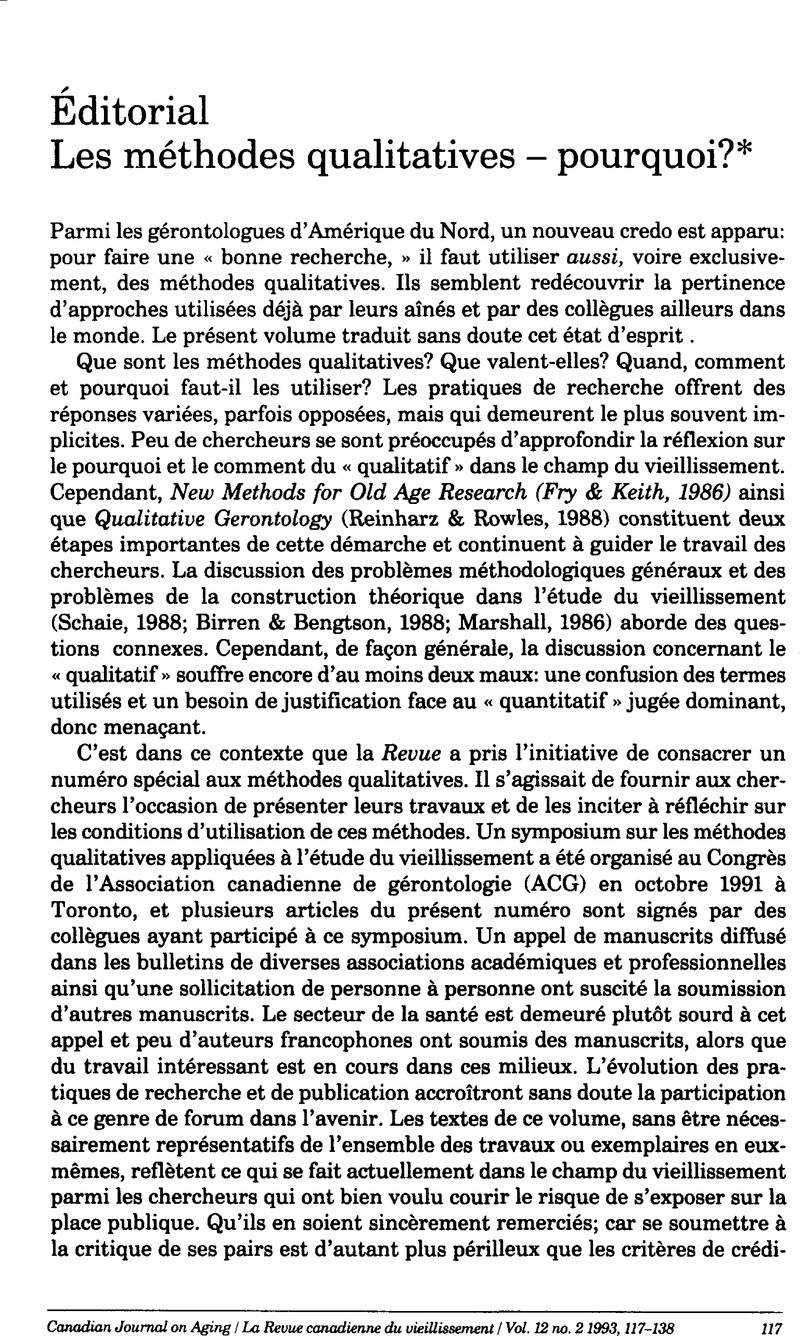Crossref Citations
This article has been cited by the following publications. This list is generated based on data provided by Crossref.
Kenyon, Gary M.
1993.
Editorial: Aging and the Humanities.
Canadian Journal on Aging / La Revue canadienne du vieillissement,
Vol. 12,
Issue. 4,
p.
416.
Kenyon, Gary M.
1993.
Éditorial: Les sciences humaines reliées au vieillissement.
Canadian Journal on Aging / La Revue canadienne du vieillissement,
Vol. 12,
Issue. 4,
p.
420.
Matthews, Anne Martin
1995.
Editorial: Multifaceted and Innovative Answers to Complex Questions in Research on Aging.
Canadian Journal on Aging / La Revue canadienne du vieillissement,
Vol. 14,
Issue. S1,
p.
1.
Matthews, Anne Martin
1995.
Éditorial: Réponses à facettes multiples et innovatrices aux questions complexes de la recherche sur le vieillissement.
Canadian Journal on Aging / La Revue canadienne du vieillissement,
Vol. 14,
Issue. S1,
p.
8.
Ducharme, Francine
and
Corin, Ellen
1997.
Le veuvage chez les hommes et les femmes âgés, une étude exploratoire des significations et des stratégies adaptatives.
Canadian Journal on Aging / La Revue canadienne du vieillissement,
Vol. 16,
Issue. 1,
p.
112.
Quirouette, Cécile C.
and
Pushkar, Dolores
1999.
Views of Future Aging Among Middle-Aged, University Educated Women.
Canadian Journal on Aging / La Revue canadienne du vieillissement,
Vol. 18,
Issue. 2,
p.
236.



